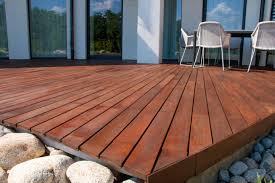When you are choosing the deck boards to be used in your outdoor space, it’s essential to consider their environmental impact. Decking materials differ widely, and understanding their environmental impact will allow you to make a more sustainable decision. Here’s what you should be aware of about the environmental impact of different Deck boards (Deski tarasowe):
1. Wood Deck Boards
Traditional deck boards made of wood like those comprised of redwood, cedar and pressure-treated lumber are popular due to their natural appearance and long-lasting. However, their environmental impact is different:
Cedar and Redwood: These woods are often sustainably harvested from forests that are well-managed, which can make them a more eco-friendly option. However, their consumption can lead to the destruction of forests in the event that they are not responsibly sourced. Redwood and cedar are very low in toxicity, and can be treated using eco-friendly sealants.
Pressure-Treated Lumber: This type of wood is treated using chemicals to prevent decay and insects. The treatments used in the past contained arsenic. However, the modern treatments are safer. Still, pressure-treated wood can let chemicals in the soil and into the water as time passes, which can lead to environmental concerns.
2. Composite Deck Boards
Composite decking is made from a blend of wood fibers and plastic that is often recycled. This makes composite boards a more sustainable option in many ways:
Recycled Content: A lot of composite deck boards are manufactured with recycled wood and plastic materials, reducing the demand for virgin materials and diverting garbage from landfills.
Longevity: Composite decks are known for their durability and low maintenance. This can reduce the need for frequent replacements and refinishing, lowering their overall environmental impact in the long run.
Non-Biodegradable: However, composite boards aren’t biodegradable. At the end of their life span, they’ll remain in landfills unless recycled, which is one of the drawbacks.
3. Plastic Deck Boards
The plastic decking boards made of 100% synthetic materials, such as recycled plastics. They offer several advantages for the environment:
Recycled Materials: A lot of plastic deck boards are made of recycled plastics, which helps reduce waste from plastic and reduce the need for new materials.
Durability and Low Maintenance: Decks made of plastic are impervious to weather, insects and decay, which can prolong their lifespan and cut down on the requirement for maintenance. They can also be recycled, which can mitigate some environmental concerns when they reach the end of their lifespan period.
4. Bamboo Deck Boards
Bamboo is a renewable and rapidly growing resource, making it an eco-friendly alternative
Sustainability: Bamboo is a fast-growing plant and is able to be harvested without killing the plant, making it a more sustainable choice as compared to conventional hardwoods.
Durability: Bamboo decking can be just as durable as hardwood if properly processed, but its environmental benefits are maximized when it is responsibly harvested and treated.
Conclusion
When you are choosing decking boards, consider the materials that are durable, long-lasting, and end-of-life disposal. Opting for recycled or sustainably-sourced materials will significantly decrease your environmental footprint while enjoying the beauty of your outdoor space.


